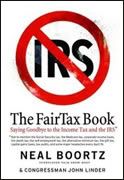 In Part 1 I talked about the various types of barbecue smokers and some of the pluses and minuses of the different types. In Part 2 I talked about meat prepping and cooking. In this installment, I want to talk a little about seasoning. In the barbecue world that means rubs and sauces.
In Part 1 I talked about the various types of barbecue smokers and some of the pluses and minuses of the different types. In Part 2 I talked about meat prepping and cooking. In this installment, I want to talk a little about seasoning. In the barbecue world that means rubs and sauces.Just like finding the right smoker, picking the right meat and cooking it correctly, spicing well enhances your barbecue tremendously. I have mentioned that “less is more” in both parts one and two and that advice is perhaps most important when talking about your rubs and sauces. It’s easy to put too much rub on your meat. It’s easy to drown your meat in sauce. It’s easy to put too many spices together in your rub. It’s easy to add too much of one ingredient or another when making a sauce. It’s best to add slowly, taste often and remember that you can always add more later.
Rubs
If you were to ask 100 Pitmasters what the best rub is, you’re likely to get 1,000 different answers. I think the reason for that is because we all like different spices on different meats, we like different spices at different times and we like variety. There are a wealth of rubs available in stores and online. Here are a few I have tried or want to try:
Corky’s
Rendezvous (Not terribly fond, but it is unique and makes for a decent change now and then)
Dancing Pig
Blues Hog
Striplings (I linked their barbecue seasoning, but their gourmet steak seasoning is amazing, too! I really miss living close to this place.)
Big Bob Gibson
Of course, a lot of the fun of barbecuing at home is making your own rubs. It makes the end product more you own. I live in Memphis, and I think Memphis-style rubs are a wonderful place to start if you want to start making your own rubs. A basic Memphis rub is simple and can be easily tweaked to individual tastes.
I found this simple recipe here:
- 2 tablespoons paprika
- 1 tablespoon salt
- 1 tablespoon onion powder
- 1 tablespoon fresh ground black pepper
- 2 teaspoons cayenne
And here’s another I found here:
- 1/4 cup paprika
- 1/4 cup dark brown sugar
- 2 tablespoons black pepper
- 1 tablespoon salt
- 1 tablespoon celery salt
- 2 teaspoons garlic powder
- 2 teaspoons dry mustard
- 2 teaspoons cumin
- 1 teaspoon cayenne pepper
I think the amount of cayenne is a little aggressive in the first recipe and the amount of cumin is aggressive in the second. I would reduce the amount to 1 teaspoon in both recipes. This second one is very close to what I make. I don’t use celery salt or dry mustard, but otherwise this is pretty much the flavor profile I shoot for.
I have been playing around with fennel and coriander. It’s a work in progress. Fennel gets very strong quickly, but I’m finding it difficult to use enough coriander to get the flavor to come out to my liking. Anyway – the point is, start simple and experiment.
There is some debate over the use of sugar in rubs. I like it. Many folks don’t like the sweetness or think the ribs will burn. If you don’t like that much sweetness, I suggest cutting back on the sugar but not removing it entirely because it helps form the bark. If you think your rub will burn, well, it won’t if you’re barbecuing. If you’re grilling, it very well could.
This link provides a wonderful explanation of one backyard barbecuer’s experimentation on the use of sugar and sweeteners in smoking (as well as some other spices and sauces). What led him to experiment is the knowledge that in candy making, sugar does not burn until it exceeds 350 degrees. Since low and slow barbecue is generally done below 275 degrees, the chances for the sugars to burn are pretty minimal. If you cook ribs on a grill, though, you might have some problems.
A final note on making rubs, I am not a spice purist and will more often than not shop for the cheaper price, but I will say that there is something about grinding your own spices. Fresh-ground pepper has a flavor that a bottle of McCormick does not. That said, I have a problem going out and spending tons of money at Penzeys, so I pick up some peppercorns at Costco. I buy some dried peppers at Walmart. But even going this economy route, there is a flavor difference in those spices. I like Paprika as a base for a rub, but grinding some dried New Mexico or Ancho peppers instead makes quite a difference. Food for thought.
Once you have the rub you plan to use, it’s time to season your meat (which doesn’t sound as euphemistically nasty as I first thought). I found the following photo (here, check out the entire blog BTW, lots of cool info) which I think perfectly illustrates good application technique:

I season my ribs similarly. I like to use a light coating of mustard, sprinkle my rub on, wrap the ribs in plastic wrap and put ‘em in the fridge overnight. For butts or brisket, I don’t put any mustard on, I just rub ‘em and wrap ‘em. The amount of rub to use is a bit tricky and relies on a few variables.
The first thing to consider is how strong is your rub? If there are a lot of strong flavors like cumin and cayenne, you probably need to use less than if you’re using a rub that’s got a lot of mild flavors. Salt is another ingredient that can quickly become too heavy. Like the instructions in the photo illustration mention, you can leave salt out of your recipes and add it to your taste individually. In my experience, nothing ruins a cook like over-spiced meat. I don’t want to waste those hours of cooking because I stubbed my toe when putting the rub on.
The next thing to think about is what kind of meat are you cooking? Chicken needs less strong flavors because it flavors so easily. Pork ribs suck up flavor more easily than beef ribs, or perhaps I should say that the strong beef flavor can handle more spices. A pork butt and brisket can handle more spices still because of their size – the rub-to-meat ration is less on those thick cuts. Start small and build your way up. It helps to remember that you can add some more of that nummy rub after you’ve cooked if you need some more spice.
Saucing
If there are 1,000 answers for every 100 barbecuers concerning rubs, there’s probably double or triple that concerning sauce. The reasoning is similar – people like different things for different reasons. Variety is a big factor, too.
For those who like to use sauce (yes, there are many barbecuers who don’t like sauce), I think there are two camps – those who sauce while cooking and those who sauce after completion. There are benefits to both. If you sauce while the meat’s on the grill – you can that nice caramelization which adds more depth of flavor to the rib. The downside of this step is that some sauces are prone to developing a burnt taste even if the sugars aren’t legitimately burnt. That’s why if you do sauce on the smoker, you should limit it to the last hour or less. Saucing on the cooker also increases the risk of making a mess. Saucing after you pull and rest the meat means that you won’t get the same caramelized flavors form the sauce, but you can address a lot of that with your rub. The sauce itself is complementary to the meat, so you’re not trying to make a candy-coated barbecue treat. As for me, I do both.
Just like rubs, there are a lot of commercial products available. If you follow the links I provided above for rubs, you’ll see that most also offer sauces. Making your sauce is fun too, but I think it’s a bit more complex than making a rub. While you just throw together some spices to get a good rub, getting a sauce to come out well often involves more than just simmering together liquids and spices.
I’ve been experimenting with a lot of sauce recipes the past six months. Some I’ve concocted entirely out of the blue, others I’ve made from recipes I’ve found around and about the innerwebs. I’ve yet to stumble on one that’s made me stop and think, “THAT’S the one!” but I’m trying. What I have found is that starting with a very simple recipe and modifying it to suit your needs seems to be the best way to go. So, following that advice, here’s the best simple barbecue sauce recipe I’ve ever found:
No. 5 Sauce
- 1 cup ketchup
- 1/2 cup cider vinegar
- 1/3 cup brown sugar
- 1 tablespoon worchestershire sauce
- 1 tablespoon rub
- Opional but v. good: 1/4 cup meat drippings
- Simmer to marry the flavors and thicken as desired.
(Recipe by Steve Petrone as posted on the The Virtual Weber Bulletin Board)
There are a lot of good things going on in this recipe. It’s very easy to make. It’s both sweet and tangy. It’s very easy to add, subtract, change and modify and still get great results. It’s already your own because the recipe is vague in that “1 TBL rub” ingredient.
The first time I made this, it was bit too vinegary for me. So, in future batches I’ve cut the ACV from 1/2 to 1/4 cup. Other additions I’ve tried include honey, apple butter and soy sauce. The “Optional” meat drippings is a necessity in my book, and if you don’t have meat drippings, try a little chicken stock or even a seasoning packet from a package of Ramen.
I’ve also tried a couple of recipes from the About.com BBQ pages. The classic sauce and Kansas City recipes are kind of like No. 5 Sauce in that they’re a good place to start. I am not a vinegar or mustard sauce kind of guy, so I stay away from the recipes that veer that way. My ideal sauce is one that is a little sweet and very savory. I haven’t found it quite yet.
Saucing is a simple, quick way to add flavor and moisture to your meat, but be careful with it. If rub is your rifle, sauce is your artillery. Unless you like a little meat with your sauce, go easy.
So, what now?
You’re armed and dangerous pal. You’ve got your cooker, you know a thing or two about meat selection and preparation and you’re ready to start slinging your own sauces. One of my favorite things to do is make micro batches of sauces in-between barbecues. Instead of making a full-serving, I’ll make cup-sized batches to get an idea of how a sauce is going to turn out. So far, I’ve made a heck of a lot and I’ve only really liked maybe a tenth of what I’ve whipped up.
So, the big lesson I’m trying to impart throughout all of these tips is to practice. Learn a little technique, get your solid ground and get comfortable cooking things you like to cook. I promise you, as good as that first rack of ribs taste, they’ll be nowhere near as good as the tenth time.




9 comments:
I love the #5 sauce, but I *up* the vinegar (that's the North Carolinian in me!) and add a few shots of Red Hot.
Holy crap. What the hell is up with my comments today? I either post a whole bunch or wind up deleting the whole thing. Crazy.
Sorry I deleted ya, Bing, but yeah, I love the No. 5 sauce.
And now they're back.
*sniff*-*sniff*
I'm used to being deleted.
But they came back!
it's fine! don't fret that my DELICATE sensibilities have been so callously used!
You know, you bring it on yourself with all that hippie Apple use.
And you know what a leftist owning only Macs since 1988 has turned me into!
Everyone has to have some kind of release. It's like having a strange attraction to Berkley chicks, tofu or Starbucks. John Wayne and Reagan set the bar too high for the rest of us. We have to sublimate our conservatism with some hippie because they set the universe off balance.
Post a Comment